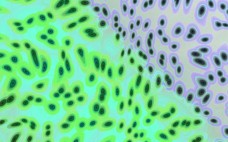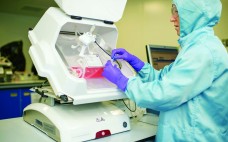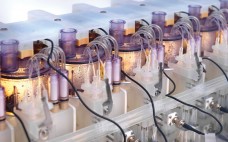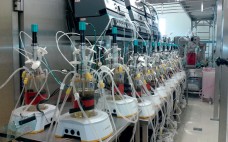Before the ratification of regulatory guidelines from The International Conference on Harmonisation of Technical Requirements for Registration of Pharmaceuticals for Human Use (ICH) Q8–Q11 (1–4) — whose scope includes raw materials for biopharmaceutical production — many drug manufacturers chose the most cost-effective and readily available raw materials sourcing options without specifically considering the provenance of those materials. Depending on the chosen supply chain, such materials could be of widely varying quality and not necessarily suitable for a destined application. Raw-material…
Upstream Processing
30 Years of Upstream Productivity Improvements
We recently completed an analysis of the past 30 years of industry progress in commercial-scale expression titers and bioprocessing yields. These basic measures of biopharmaceutical manufacturing efficiency also benchmark the technological progress made in bioprocessing over recent decades. Titer and yield improvements generally indicate related bioprocessing cost savings, something most commercial-scale manufacturers work to improve. This focus on efficiency and productivity has led to constant bioprocessing improvements even for long-approved and -marketed products. Our findings indicate that although upstream titers…
Perfusion’s Role in Maintenance of High-Density T-Cell Cultures
T-cell therapy is a rapidly growing field of personalized medicine, attracting the interest of venture capitalists and pharmaceutical companies alike. Such therapies exploit T cells’ innate abilities to protect against pathogens as well as to seek and destroy cancerous cells. Although many different forms of T-cell therapies are currently in clinical trials, they all follow a common protocol: T cells are isolated from a patient, modified and expanded in a laboratory setting, and then infused back into the same patient…
Bioreactor Design for Adherent Cell Culture — The Bolt-On Bioreactor Project, Part 1: Volumetric Productivity
The Bolt-on Bioreactor (BoB) project is an independent initiative aimed at developing and commercializing a bioreactor for efficient, automated culture of adherent cells in production of therapeutic cells and other biopharmaceuticals (1). After conducting thorough research on available culture systems for adherent cells, the BoB team believes that a successful alternative to existing devices must solve four major challenges. The first challenge has to do with volumetric productivity, the second with process automation, the third with containment and sterility, and…
Ask the Expert – Optimizing Cell Culture Media Supplements: Using Design of Experiments for CHO and HEK293 Cells
with Francesc Gòdia (chemical engineering professor at the Universitat Autònoma de Barcelona) Chemically defined media free of animal-derived components are required for bioprocess operations based on mammalian cells. Supplementation of commercial media with specific compounds was studied using a design of experiments (DoE) approach to screen the most efficient compounds for two cell lines and then determine their optimal conditions. DoE allowed simultaneous testing of several compounds to determine potential interactions among them in addition to their individual effects. Gòdia’s…
Reducing Timelines in Early Process Development – Using a Multiparametric Clone-Selection and Feed-Optimization Strategy
The market for biopharmaceutical products remains highly attractive to small biotechnology companies and big pharmaceutical corporations alike (1). Most leading market products are made using recombinant technology (2). Pressures are continually increasing on process development groups to reduce development costs and timelines for taking new clinical products forward from product research bench scale into initial clinical evaluation studies. For many years a recognized critical bottleneck in development of products from mammalian cell lines was selection and isolation of stable, high-producing…
Polymer Resins: Building Blocks for Single-Use Bioreactor Components
Single-use manufacturing equipment for the production of certain biological compounds (e.g., recombinant proteins from mammalian cell cultures) makes good sense. Such equipment reduces water and energy use, decreases the need for equipment sterilization and waste treatment, and optimizes space in a manufacturing facility. But consider the plastic resins used to construct the disposable parts of such equipment. In BPI’s April 2014 issue, Tony Kingsbury discussed the fundamentals of how plastics are made. In this second installment of BPI’s series on…
Automated Mini Bioreactor Technology for Microbial and Mammalian Cell Culture: Flexible Strategy to Optimize Early Process Development of Biologics and Vaccines
The use of mammalian and microbial cells in the production of biologics and vaccines is well established, and the majority of the top 10 drugs are now manufactured in this way. There is a significant and growing pipeline of new biologics (1), which in combination with increased pressure on cost reduction and generic competition from biosimilars (2), means that many biopharmaceutical companies are looking for ways to improve productivity in their development laboratories to ensure that upstream processes are efficient…
Single-Use, Stirred-Tank Bioreactors: Efficient Tools for Process Development and Characterization
During the past decade, single-use bioreactors have become widely accepted as an alternative to conventional stainless steel or glass bioreactors for clinical manufacturing and process development. In the biopharmaceutical industry, glass bioreactors are used mainly for process development and optimization, but also scale-down models for process characterization. So it is of significant importance that such vessels replicate the design of production-scale bioreactors for both reusable and single-use applications. Stirred-tank bioreactors with 2-L, 5-L, and 10-L working volumes have proven to…
Superior Scalability of Single-Use Bioreactors
During the past several years, single-use bioreactors have been gradually established in modern biopharmaceutical processes (1, 2). This adoption is directly linked to their unique ability to enhance flexibility and reduce investment and operational costs. Furthermore, production output can be increased, and time to market is shortened (3). Today a wide variety of single-use bioreactors exists for the cultivation of mammalian and insect cells (4), whereas only limited solutions are available for microbial cultures (5). Typically, processes are established and…









